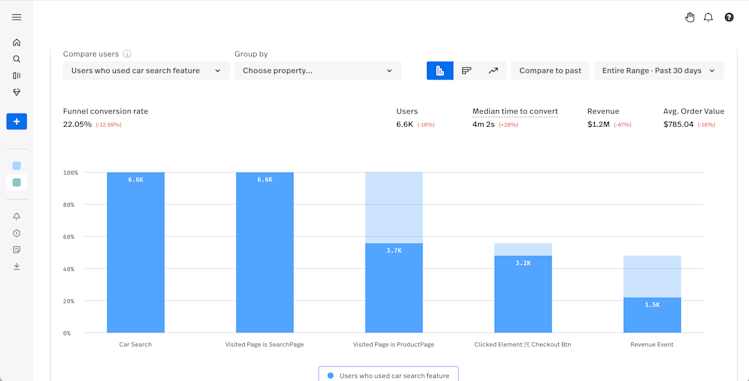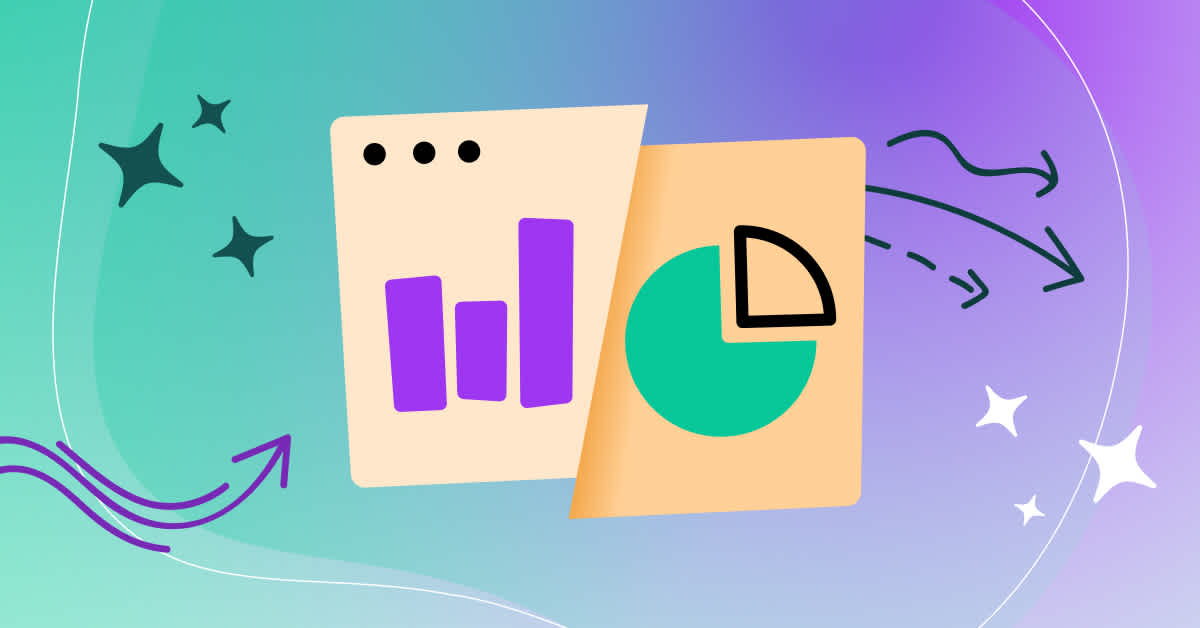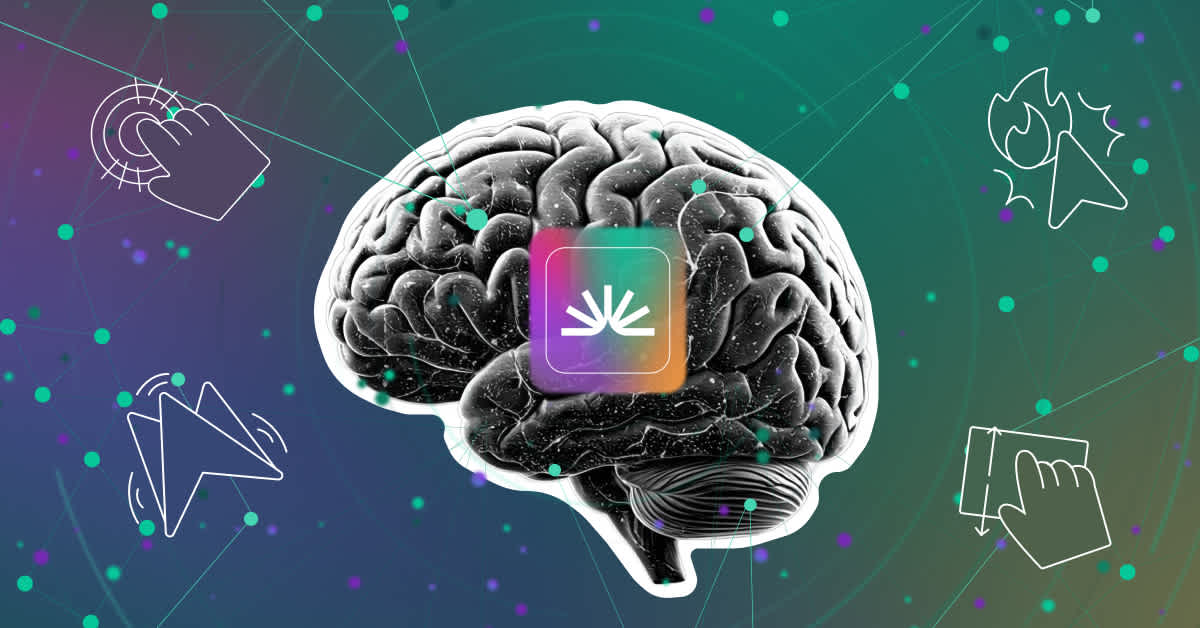At a glance, Fullstory and Contentsquare might look similar. Both promise behavioral insights, session replays, and ways to optimize digital experiences. But when you dig deeper, the differences may be hard to ignore.
If you're choosing between the two, this comparison will save you hours of research. We show you exactly how they differ across setup, usability, depth, and long-term value.
At a glance: Quick comparison
Below is a head-to-head comparison of the most critical evaluation criteria: Need more detail? We break it down below.
Category | Contentsquare | Fullstory |
|---|---|---|
Data capture & depth | Manual setup is allegedly required for SPAs, modals, and dynamic elements. Limited no-code analysis. Drill-down capabilities can be shallow. | DOM-level capture works out of the box. No tagging required—even for SPAs. Full drill-down into every interaction. |
Setup & maintenance | Built from multiple tools. Site changes might break tracking and require manual fixes. Ongoing engineering effort. | One snippet for full functionality. Updates automatically with site changes. Minimal engineering support needed. |
Platform integrity | Created through acquisitions (Heap, Hotjar, Clicktale). Tools and data models can feel disconnected. | Unified platform with native features built on a single data model. |
Privacy & security | Limited masking on mobile. Masking rules can rely on fragile selectors. Lacks real-time PII detection. | Best-in-class masking across devices. Real-time PII detection with Detections. Privacy-first approach. |
Debugging & technical insights | Limited access to console and network logs. Heatmaps can break when the site updates. Mobile SDK lacks transparency. | Full access to console and network logs. Heatmaps stay accurate dynamically. Open, documented SDKs. |
AI & future-proofing | AI is tied to predefined metrics. May not apply to retroactive data. | AI works retroactively across all behavioral data. |
Support & governance | Often relies heavily on services. Global presence, but onboarding can be fragmented. | Streamlined onboarding with step-by-step SDK documentation. Support built for speed and clarity |
One platform vs. many parts
Some platforms were built to work together. Others were built by acquisition and never fully brought into sync. That difference shapes every part of the user experience.
Fullstory was built as a single platform. Every feature shares one data model, one script, and one interface, so teams can move quickly and stay aligned.
Contentsquare was put together from acquired tools like Clicktale, Hotjar, and Heap. The result is a patchwork of modules with different data models, inconsistent UX, and workflows that often require help from experts to navigate.
Having used Contentsquare and coming here and really missing it on the first couple days, I think Fullstory is a far more powerful tool. [Y]ou guys are easily my favorite vendor I’ve ever worked with and the support you guys have provided has been amazing.
- Digital Analyst, Fortune 500 Restaurant Chain
Here's what that means in practice:
Setup takes minutes with Fullstory. You deploy one script and start capturing retroactive, DOM-level data immediately.
Setup with Contentsquare can take weeks or more. You might need custom tagging, separate scripts for different tools, and support to configure core features.
Fullstory adapts automatically. When your site changes, your data stays intact—there is no need to remap zones or re-tag elements.
Contentsquare can require ongoing maintenance. Structural changes to your site risk breaking data collection or invalidating reports.
Fullstory works out of the box, and Contentsquare can come with baggage.
What both platforms handle well
Both platforms help teams understand what users are doing—and where they’re running into trouble. If your goal is to improve digital experiences, both platforms support key use cases:
Session replay
Each tool captures 100% of user sessions across web and mobile. You can watch real journeys, skip to key moments, and share recordings with teammates.
Journey mapping
Want to understand drop-offs or weird user paths? Both platforms visualize customer journeys and let you filter them by behavior, page type, or cohort.
Fullstory shows real DOM interactions. Contentsquare uses sunburst visuals with advanced journey layers, but limited analysis
Conversion & funnel reporting
Whether you care about cart drop-offs, lead form abandonment, or onboarding flow issues, both tools help you build and measure funnels across key touchpoints.
Fullstory’s funnels tie directly to replays and DOM events. Contentsquare supports top-down analysis with side-by-side journeys.
Error monitoring
Both include JavaScript error tracking, API failure detection, crash insights, and the ability to measure how errors affect business outcomes. Integrations with tools like Jira and Slack make it easy to act fast.
Speed analysis
Both platforms include real-user monitoring (RUM) to pinpoint slow-loading pages and understand how load times affect user behavior.
Contentsquare includes synthetic monitoring as an add-on; Fullstory focuses on in-session impact.
Questions to ask your team
Your decision isn’t just about features. It's about how the platform fits your team, your tech stack, and your long-term goals.
Will it work with my site structure?
Modern websites rely on SPAs, dynamic content, and custom components. Fullstory captures it all automatically. Contentsquare often needs manual tagging or help from consultants.
How quickly can I get value?
Fullstory delivers insights as soon as it's installed. With Contentsquare, you may spend weeks just getting the basics configured.
What happens when my site changes?
Fullstory keeps your data intact, no matter how your structure evolves. Contentsquare can break and require retagging or reconfiguration.
Is my user data protected?
Fullstory detects and masks sensitive information in real time. Contentsquare masking depends on brittle selectors and lacks real-time detection.
Will this scale across teams?
Fullstory is intuitive enough for product, engineering, and marketing to use without friction. Contentsquare often relies on specialists or external support.
What kind of support will I need?
Fullstory provides responsive support and clear docs. Contentsquare may require ongoing paid services to get full value.
Can I trust the data?
Fullstory captures everything retroactively—no sampling, no blind spots. Contentsquare relies on tagging and sampling, which can leave gaps in understanding.
How future-ready is this?
Fullstory's AI works across all behavioral data, retroactively. Contentsquare’s AI is limited to predefined metrics and use cases.
The verdict
Fullstory is built for teams that value speed, clarity, and autonomy. From setup to insight, it delivers value quickly—without the extra work, manual tagging, or reliance on outside help.
Contentsquare may be a fit for teams with deep budgets, complex service contracts, and a preference for visually heavy dashboards. But if you want a platform that just works—for every team, on every site change, without delay—Fullstory is the better choice.
Ready to see what a unified behavioral data platform can do for you? Explore Fullstory’s expanded portfolio—including StoryAI, Workforce, and Anywhere—or book a demo.







